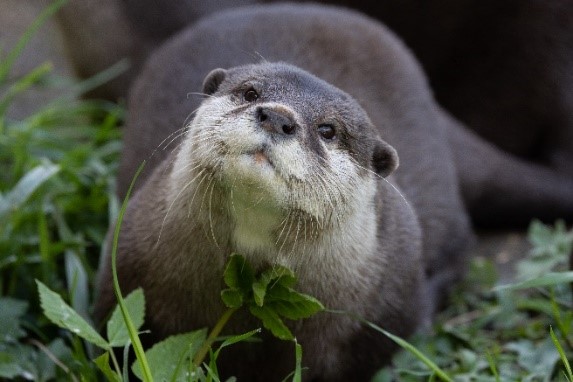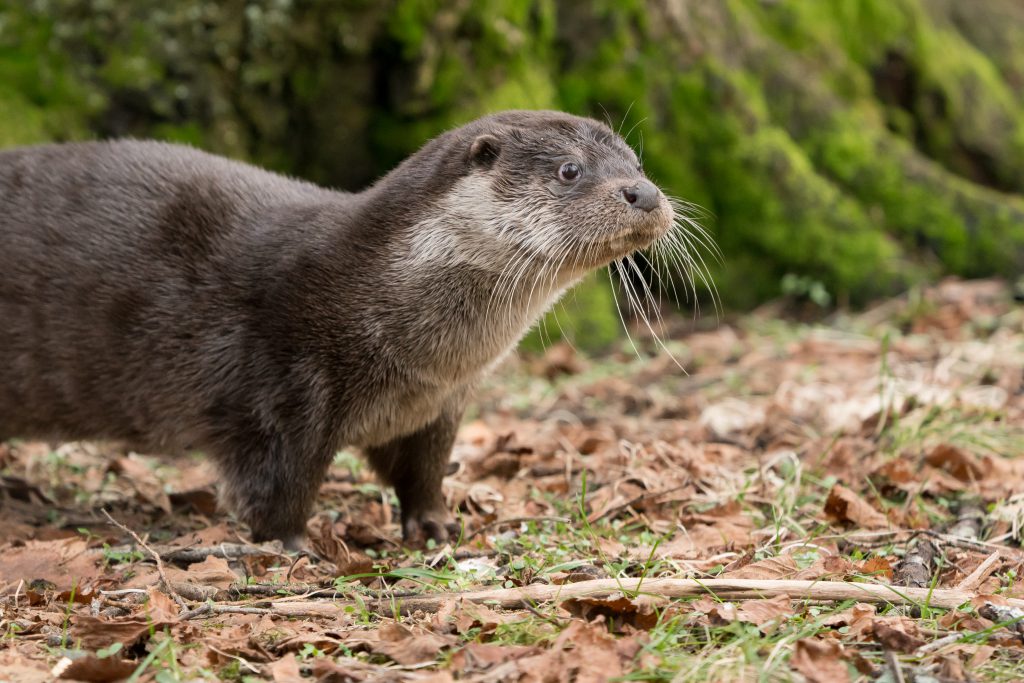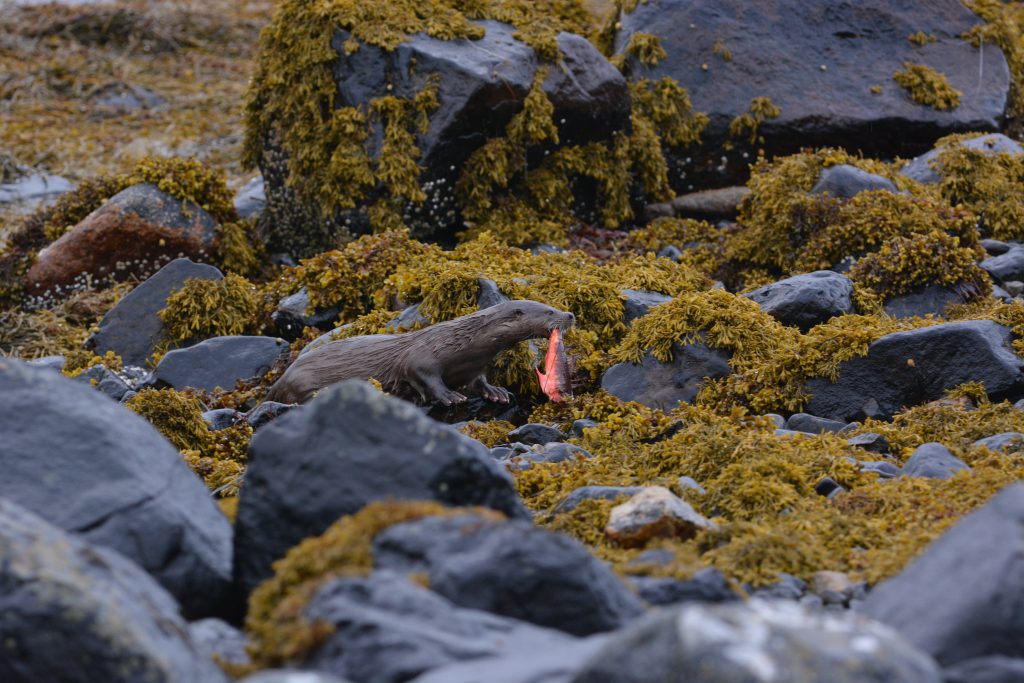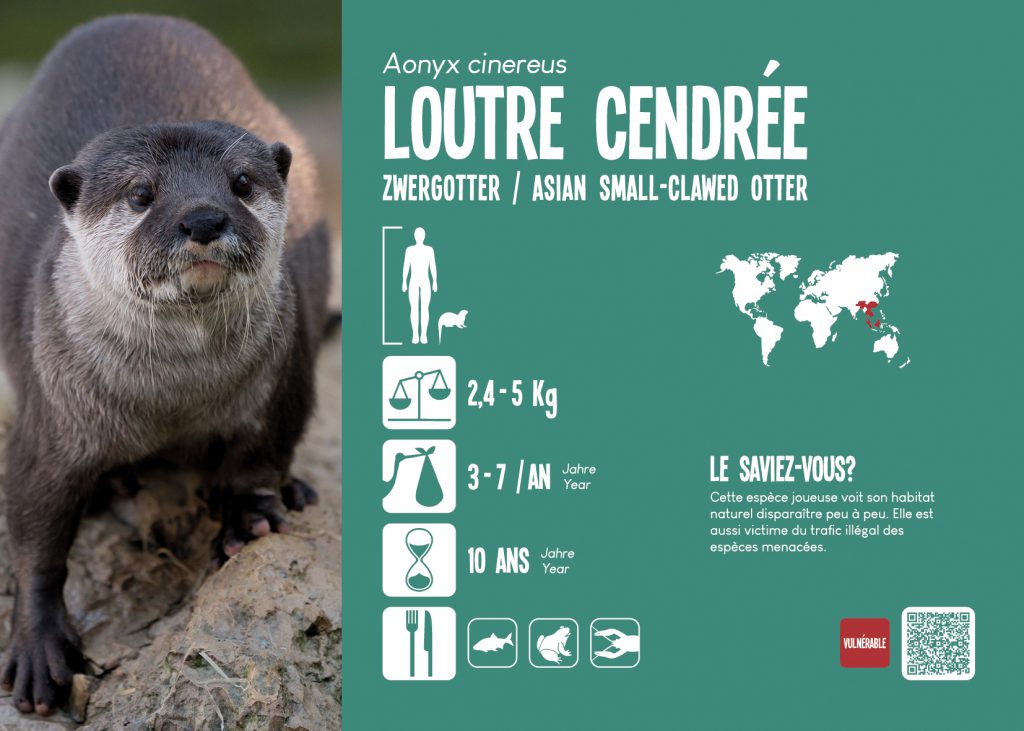
ASIAN SMALL-CLAWED OTTER
Mammalia > Carnivora > Mustelidae > Aonyx cinerea
Did you know?
This playful species is gradually losing its natural habitat. It is also a victim of illegal trafficking in endangered species.
Is a pictogram unclear? Click here!
How did asian small-clawed otter end up in MUZOO?
If zoos prefer to study the choice of the species they house, often the chance of life prevails! Such is the case of MUZOO’s asian small-clawd otters, the descendants of a pair taken in by the zoo following a kidnapping.
Today, the recently inaugurated enclosure is home to a small family including the son of the sequestered couple, a female from Austria and one of their cubs.
MUZOO’s caretakers can recognize individuals, can you? Are you up to the challenge?
The easiest to distinguish is the four-year-old. Weighing in at 5kg, it’s the biggest and most massive of the three. If you look closely at its muzzle, you’ll notice that its eyes are more prominent, as if they’re protruding a little more from the eye socket.
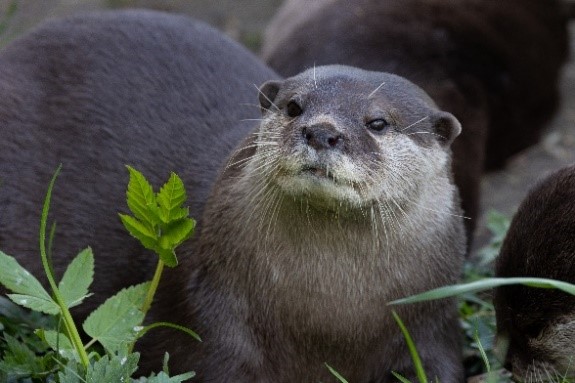
The father, on the other hand, is the slimmest of the three; he has a brown spot on his right babina (in mammals, the babina is the name given to the highly-developed lips, whose shape and sensitivity can be adapted to the animal’s diet).
Despite his adulthood, he continues to play a lot. She can easily be observed juggling food, contorting herself on her back or playing with her son, despite some tension due to the latter’s approaching sexual maturity.

The female, on the other hand, is stockier, with a shorter, rounder tail. When she’s on her back, it’s easy to see her udders.
